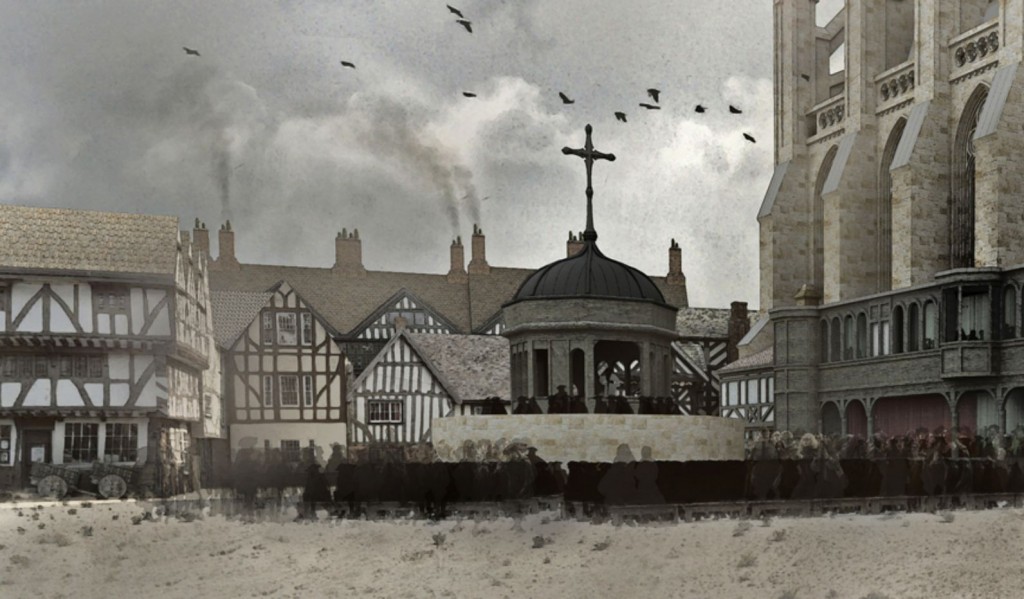Acentech collaborated with North Carolina State University on the “Virtual Paul’s Cross Project,” an acoustical archaeology study made possible by a Digital Humanities Start-Up Grant from the National Endowment for the Humanities. Acoustical archeology is a new branch of archaeological study which explores the sounds of earlier times and uses auralization techniques to make these sounds available to modern listeners.
The Virtual Paul’s Cross Project, directed by Dr. John N. Wall of North Carolina State University, uses both visual and acoustic modeling to recreate the experience of John Donne’s 1622 Gunpowder Day sermon at Paul’s Cross, outside St. Paul’s Cathedral in London. For this project, Acentech combined an anechoic recording of Donne’s famous Gunpowder Day sermon, a computer recreation of St. Paul’s Cathedral (as it was prior to being destroyed by the Great Fire of London in 1666), and custom software that was written to generate a full soundscape of 17th century London.
Acentech’s 3DListinening (3DL), or acoustical simulation, is a surround-sound reproduction of the entire two-hour sermon given on Nov. 5, 1622,complete with an artificial intelligence generated crowd, the bells of St.Paul’s, and the general ambience of 17th century London consisting of passing carts, horses, dogs, and birds. The simulation software can vary the crowd size from 20 to 5,000 people and switch between a dozen listener perspectives to recreate what it might have been like to attend and hear the sermon from a variety of locations and audience sizes in the churchyard.
Acentech’s simulation of this historic event creates a spatially accurate three-dimensional soundfield using multiple speakers around and above the audience. Building on our existing 3DL technology, this project borrows techniques from computer-aided music composition and audio production to create an immersive acoustical environment that allows us to vary the Paul’s Cross listener’s position in the audience as well as the crowd’s size and intensity in real time. The result is a soundscape that includes the sermon, crowd response, and the ambient sounds of pre-Industrial London.


